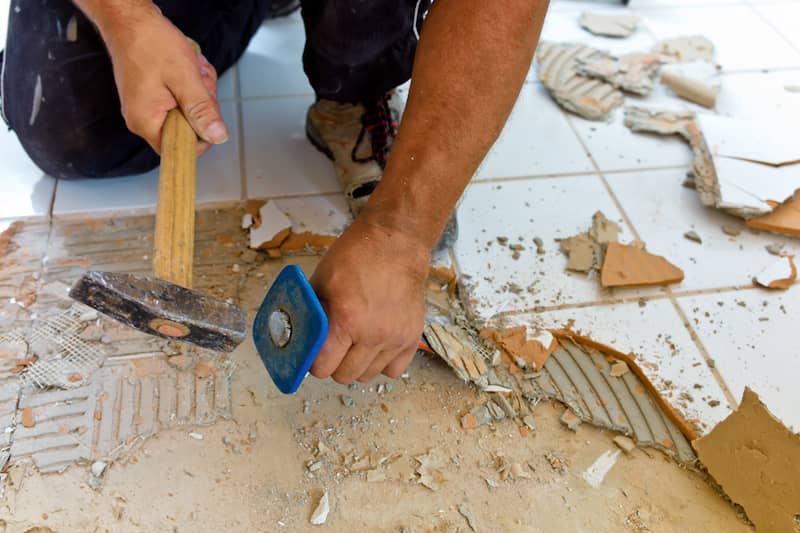Embarking on the journey of renovating a home can be both exhilarating and daunting. You might dream of kitchen remodeling with customized cabinets and new walls or updating your heating and cooling systems for more efficiency.
Whatever your focus, the renovation process requires careful planning to avoid incidental cost and ensure the project’s success. Whether it’s a small bathroom remodeling or a whole house transformation, setting a realistic project budget and obtaining the necessary building permits for renovating a home are pivotal first steps.
Read on for professional advice that will walk you through the planning process, helping you decide on your next renovation project.
Table of Contents
ToggleThe Preliminaries - Where to Start Remodeling Project
Starting a remodeling project can feel like standing at the foot of a mountain with the peak far out of sight. It’s an ambitious endeavor that encompasses a wide array of elements, from creative inspiration to nuts-and-bolts logistics. Whether it’s a kitchen remodel, a bathroom makeover, or a whole house transformation, the process of renovating a home can be complicated and sometimes overwhelming. But just like any challenging journey, a successful home renovation starts with a solid foundation of planning and preparation.
So, before you tear down that wall or rip up that floor, we will focus on the crucial first steps you should consider to ensure your home renovation goes smoothly.
Assess Your Needs and Goals
1) Define your objectives for renovating a home
2) Budget Considerations
Research and Planning
1) The importance of doing your homework
2) Sketching a preliminary plan
Legal Requirements and Permits
1) Knowing zoning laws and regulations
2) Obtaining necessary permits
In accordance with the scope of your remodeling project, you may need to obtain certain permits. These clearances may relate to a building permit, electrical plumbing systems, or other aspects of the renovation. Make sure to check with your local municipality to understand what permits are required and how to obtain them.
Properly assessing your needs, meticulously planning, and being aware of legal requirements are crucial steps in the early stages of a renovation project. They set the foundation for a successful home remodel and help avoid costly mistakes and delays.
The Essentials - Steps to Take in Renovating a Home
Create a Detailed Budget
1) Setting a realistic budget
Having a detailed budget is the cornerstone of a successful house refurbishment. Fortunately, the internet is awash with budget templates specifically designed for home renovations. These templates include different cost categories such as materials, labor, and even unanticipated costs, making it easier for you to plot out your financial plan.
2) Unexpected costs to consider
Hiring the Right Team of Remodeling Contractors

1) Finding a contractor or going DIY
2) Checking credentials and reviews
Scheduling and Timelines
1) Drafting a timeline
2) Setting achievable milestones
Define clear milestones for your home facelift project. This could be as simple as completing the painting in the main rooms within a week or installing new appliances within a month. Celebrating these smaller victories can keep you motivated throughout the lengthy and sometimes arduous home renovation process.
A successful renovation requires more than just a wish list and a dream. It involves setting a realistic budget, hiring a competent team, and maintaining a strict timeline.
Remember, a well-executed home improvement not only enhances your living space but can also significantly boost the resale value of your house.
Common Mistakes in Whole Home Renovation and How to Avoid Them
Renovating a home is a substantial endeavor that can be both rewarding and stressful. While the goal is to create your dream living space, there are pitfalls many homeowners encounter that can turn the home renovation process into a nightmare.
To help you navigate through your home makeover successfully, we’ve outlined some of the most common mistakes people make and tips on how to avoid them.
Budget Blowouts
One of the most common pitfalls in any home remodeling is exceeding the budget. This often happens because many homeowners fail to account for unbudgeted expenses. For example, while planning for kitchen remodeling, you might overlook the need for new appliances, and suddenly, your cost estimates go out the window.
Tips: To prevent budget blowouts, always add a contingency fund of at least 15-20% to your initial budget. This will give you some flexibility for unexpected issues, such as upgrading the plumbing systems or adding more natural light to a room.
Contractor Issues

Hiring the wrong contractor can significantly affect the success of your renovation undertaking. Issues can range from delays in the project timeline to poor-quality work that needs to be redone.
Red Flags:
Lack of proper licensing or liability insurance
No past work references or negative reviews
Inability to provide a detailed contract or payment schedule
Tips: Do thorough background checks on potential contractors and get everything in writing. Ensure everyone is on the same page concerning the details of your projects, from the type of custom cabinets to be installed to the paint colors for each room.
DIY Dilemmas
The DIY approach can be rewarding for smaller projects like painting a guest bedroom, but for larger endeavors such as a whole house remodel or installing new heating and cooling systems, it’s often best to hire professionals.
Example: You decide to tackle your bathroom remodeling project. It all seems well until you realize you have no experience with plumbing. A few hours of ‘experimentation’ later, you’re dealing with flooding, and the cost of repairs far outweighs what you would have paid a professional.
Tips: Be realistic about your skill level and the time you can devote to the renovation. If you find that the project is becoming too complex or time-consuming, don’t hesitate to call in a professional.
By being aware of these common mistakes and knowing how to prevent them by following the mentioned great tips above, you can better plan your home renovation project. With the right planning and execution, your next project will be more likely to end in success rather than stress.
Setting Yourself Up for Success in Your House Renovation Journey
You’ve learned much about what it takes to successfully start and complete a home remodeling project. From understanding your needs and goals, researching and planning, and understanding legal requirements to creating a detailed budget, hiring the right team, and managing timelines, each step is crucial to the project’s success.
Remember, setting a realistic budget is key. Numerous budget templates are available online to help you plan your finances effectively. Also, while it might be tempting to save money by going DIY, it is essential to consider the scale of the project and whether professional help is necessary.
Checking credentials and reviews of potential contractors and making a detailed payment schedule can save you from unexpected issues later on. Additionally, drafting a timeline and setting achievable milestones will help keep the project on track.
Your next home improvement venture doesn’t have to be overwhelming. With careful planning, research, and a clear understanding of all the steps involved, you can create an entire home without any unexpected surprises.
Remember to account for unexpected costs, plan ahead, and have some wiggle room in your budget and schedule. Also, don’t forget to obtain all necessary permits and to understand the local zoning laws and regulations before starting your renovation.

Lastly, if you are looking for professional advice, especially for kitchen remodeling, Nu Kitchen Designs is a great place to start. Their team of professional contractors can take care of every aspect of your bathrooms and kitchen remodel, from design to installation, ensuring that your project runs smoothly from start to finish.
Congratulations on taking the first steps toward your new house journey! With careful preparation, the right team, and a well-thought-out plan, you are well on your way to making your dream home a reality.


